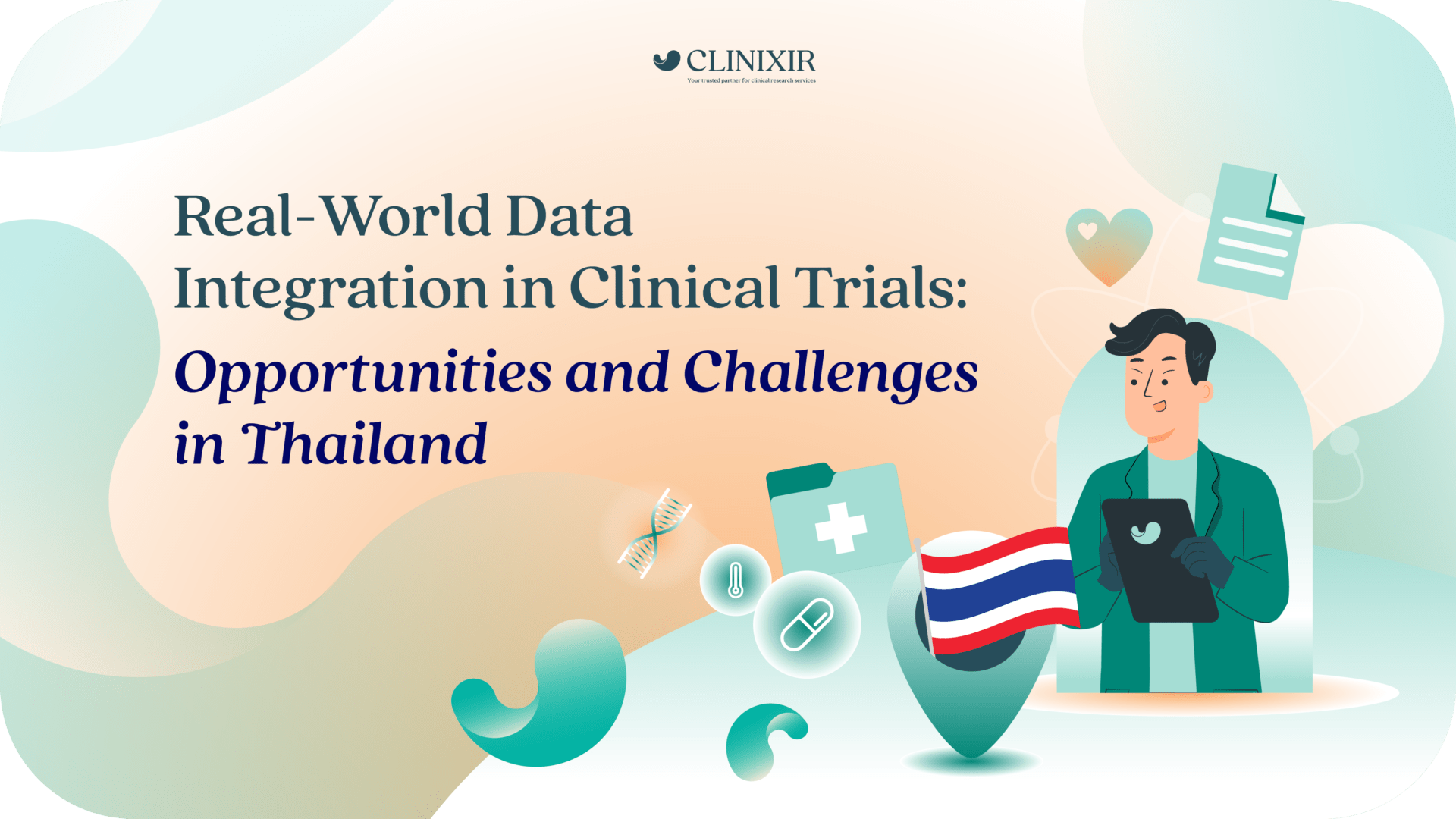The pandemic has forced the world to undergo rapid digital transformation in almost all aspects of life. From the implementation of remote work, the shift to a direct-to-consumer supply chain, to limitless cloud-based interconnectivity between individuals and businesses, the widespread use of digital tools have resulted in unprecedented amounts of data, enabling companies to easily tap into consumer behaviors and lifestyle preferences.
For the clinical research industry, the rapid adoption of digital technology has enabled researchers to derive a massive amount of real-world data or patient-reported outcomes, including data from in-home settings. Real-world evidence (RWE) comprises data from claims, clinical studies, clinical settings, pharmaceutical databases, and patient advocacy groups and communities. This information is further analyzed to create insights on the use of medical products, which helps in the development of personalized patient care for better outcomes. While clinical trials remain the gold standard in the approval of new interventions, real-world evidence plays a complementary role by answering highly complex and problematic questions within clinical trials.
How is it used by different stakeholders in the pharmaceutical industry?
Experts, providers, regulators, and payers make use of real-world evidence for myriad purposes, such as policy development, treatment planning, post-market safety monitoring, and cost-value analysis.
Real-world evidence also informs life science researchers at pharmaceutical companies of the broad impacts surrounding their drugs and treatment. Clinical trials are a standard practice in evaluating a given drug’s efficacy, and RWE provides the complementary insights necessary to quantify the potential benefits or risks related to the use of a drug or treatment in routine clinical care and novel therapy.
For health planners and payers, RWE focuses on economic outcomes and covers a spectrum of analytical functions. Primary examples include the allocation of resources, the calculation of treatment costs, the cost of reduced morbidity, and life-years saved.
The use of RWE varies by health planner organization, and depends on their specific goals. To some organizations, the use of RWE aids the decision-making of pharmacy and therapeutic committees. For instance, payer organizations correlate treatment costs with the short and long-term efficacy of pharmaceutical products and therapies. For this reason, payers rely on RWE to ensure that their algorithms are indeed measuring what they are intended to measure.
By contrast, the application of RWE for clinical professionals is more indirect. Using RWE, they focus on improving patients’ overall health and quality of life by developing clinical guidelines for their treatment plans. In addition to aiding clinical trial studies, the insights derived from real-world evidence can also broaden physicians’ understanding of a particular condition or disease. As a result, they are able to develop more appropriate treatment plans for specific patients.
Regulators focus on the humanistic outcomes and functional aspects of RWE for their post-market safety monitoring processes and decision-making. They must ensure that newly approved drugs and policies are effective in making life better for all members of society. Therefore, the use of RWE helps them accelerate policy development and approval of new treatments and drugs. Furthermore, RWE can be used to inform the design of government-run healthcare services, ensuring that the general public receive the full benefit of these programs.
Commercial and regulatory product positioning
The quality of real-world evidence depends on the data used to generate it. Physicians, healthcare providers, and researchers play a critical role in gathering this data. Clinicians routinely use electronic health record systems to enter data regarding diagnoses, lab tests, results, and the drugs prescribed.
The future of RWE will increasingly involve the use of highly advanced end-to-end solutions that address a product’s entire life cycle. Pharmaceutical companies are bolstering their technological capabilities and strategies to incorporate the large amount of real-world data collected. The use of IT-based technologies and machine learning will therefore become increasingly commonplace within the clinical research field.
According to research, 70% of pharmaceutical respondents are building their capability to conduct RWE studies internally. This means hiring experts to build, implement, monitor, and maintain cloud-based RWE systems capable of data collection and integration. Interpretation of such data will also require biostatisticians, regulatory experts, and clinical professionals. While the intention to adopt and apply RWE is present among leading pharmaceutical organizations, execution is not easy. Making full use of such data requires the input of experienced researchers and experts from top contract-research organizations.
At Clinixir, we offer industry-leading RWD and RWE research services to help you develop a more complete view of your new treatments and drugs. Our affiliation with Thailand’s top medical institutions, access to the country’s largest set of medical records, extensive regulatory knowledge, advanced research methods, and state-of-the-art methods enable your organization to put reliable drugs and treatment methods on the market, maximizing your commercial output and providing a better quality of life for the general public. Contact us today to get started.
You May Also Like
These Related Stories

A Step-by-Step Guide to eConsent ICF (Informed Consent Form)

Real-World Data Integration in Clinical Trials: Opportunities and Challenges in Thailand



